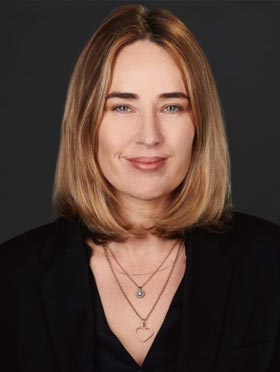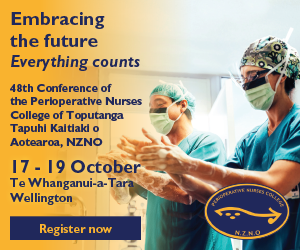
In 20 years of nursing, I have been present at dozens of deaths.
As an undergraduate, I worked for three years as a caregiver in a rest home, so witnessed many deaths from natural causes – often without family or whānau present
In the hospital, where I started my registered nursing career in acute care such as emergency, I also saw people die, without family or whānau present.
In primary care, I have seen longer deaths, from complications of chronic or terminal illness.
All these experiences have led me to believe that there is such a thing as a good death.
While we have palliative care options that allow for a good death, for some who are terminally ill with less than six months to live, the most important thing may be to have control over when and how that death may occur – and who will be there with them.
Many experienced nurses are experts in death and dying.
I accept that some nurses, nurse practitioners (NPs) and doctors may choose to not provide this service, due to conscientious objection.
But it is important – as with last year’s decriminalisation of abortion – that patients are referred appropriately to a willing practitioner.
In Aotearoa, many facing imminent death will not choose a death day, as it does not align with their values or belief system. I respect that choice too. The legislation is very clear that a clinician is not to raise the topic with a patient and this is a way of protecting against any coercion.
I have completed the Ministry of Health (MoH) training. The legislation and rollout has many processes to ensure the person seeking assisted dying is competent to do so and free from coercion. This involves up to three practitioners certifying this, two medical initially and – if not satisfied – a third opinion is sought through psychiatry colleagues.
Although this is new to us here in Aotearoa, the MoH can use experience from Australia and Canada, where similar legislation is already in place. This gives us something to base our own interpretation and practice on.
The SCENZ (support and consultation for end of life in NZ) group includes a range of practitioners and oversees the EOLCA, along with a medical officer. There is also an 0800 number for support.
But it is disappointing that the MoH only appointed one nurse representative – NP Jackie Robinson – to SCENZ. See You can’t know what you would decide, Kai Tiaki November 2021.
It is top-heavy with medical practitioners, who comprise seven out of the 12. However, it does appear to have good representation for Māori.
My understanding, from listening to a colleague in Canada, is that the service is deeply valued by the patient and the community supporting them.
From what I have learned about the death day, I think it would best involve two clinicians to support the individual, their whānau and community, as well as the clinicians themselves. The range of skills needed would best be delivered through a collegial approach.
The EOLCA refers to a medical practitioner. The MoH appear to have interpreted that literally, despite 2019 amendments to the Health Practitioners Competence Assurance Act to allow qualified health practitioners to carry out activities that could previously only be done by doctors.
As things stand now, if an NP is approached by a patient about assisted dying, they must refer to a medical practitioner, who must then seek a second opinion from another medical practitioner.
Yet I believe it is entirely within an NP’s competency to be able to provide a first or second opinion on a patient’s eligibility and competency. It does concern me that in rural areas especially, this may increase barriers to access and create inequities.
Currently, NPs are able to administer the life-ending medication but not assess eligibility or initial consent. I find this very strange decision-making and wonder about the hegemony of the MoH decision-makers in their interpretation.
An NP/GP model, and an RN-led assisted dying service in rural areas, would be much more representative of the workforce available. It would ensure a quality and equitable service, as well as shoring up the wellbeing of practitioners.

Seeing a resident effectively starve himself led a nurse practitioner working in aged care to sign up to provide assisted dying care
A Waikato aged care nurse practitioner (NP) registered to assist eligible people to die says she feels obligated to help after years of seeing needless suffering in aged care.
Kai Tiaki agreed not to name the NP, as she feared other nurses’ reactions.
One man with motor neurone disease stood out in her memory. Dependent on others for all his needs, including toileting, he had a gastronomy feeding tube in place but refused to allow anyone to feed him through it.
Unable to swallow, in effect he starved himself until the pneumonia took him away.
“Unable to swallow, in effect he starved himself until the pneumonia came and took him away,” she recalled. “This was very difficult for his family and staff, as well as the man himself. All he wanted was some dignity and choice.”
She is now poised to assist a patient to die for the first time, since the End of Life Choice Act (EOLCA) came into effect on November 7.
“I really don’t know how I feel – apprehensive and worried, probably.”
She would be accompanying a GP, who knew the patient. Under the EOLCA, NPs were not able to be part of the early process including decision-making, which would likely make it difficult to form relationships with patients, she said.
“I think the whole thing is going to be really difficult – the GP or attending practitioner can form a relationship with the patient over time, but the NP is potentially going to be coming in at the end, without any time to form a relationship.”
In her 40 years working in aged residential care, she has seen many deaths – some of which took a long time and involved suffering. Some – those with terminal illness such as cancer – would likely have been eligible for assisted dying, but those with dementia would not. Yet people with dementia could have very challenging deaths, she said.
Nurses, particularly those in aged care, were often more comfortable and familiar with death than doctors, she said. “During my career as a nurse, I have been the one to administer the last [pain relief] injection to those at the end of life on numerous occasions and been present at the bedside at the time of passing.”
The assisted dying process was highly structured, with many opportunities for people to change their minds, she said.
“For those who have made the decision to pursue assisted dying, this will not have been done lightly.”
It was frustrating that under the current legislation, NPs were not allowed to participate fully in the process. “Will I be able to develop a relationship with the person who has received authorisation to end their life in the time between approval and date of planned death?”
Nor were NPs able to write the prescription currently, even if they were the attending practitioner.
“Very much a handmaiden role again – doing the hard bit, the actual procedure!”
However, it was a start, she said.
Nurse Practitioners New Zealand (NPNZ) chair Sandra Oster said the EOLCA required NPs to act under the instruction of an attending medical practitioner, even though they were authorised practitioners.
The MoH had acknowledged the error but had taken the view it could be amended when the legislation was reviewed, she said. There was no set date for a review.



